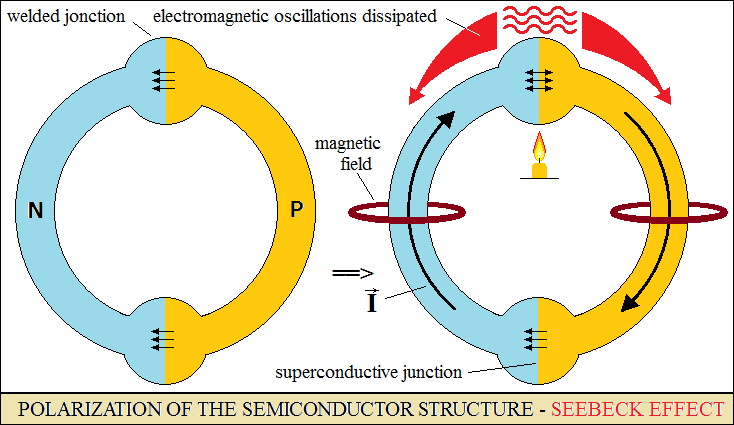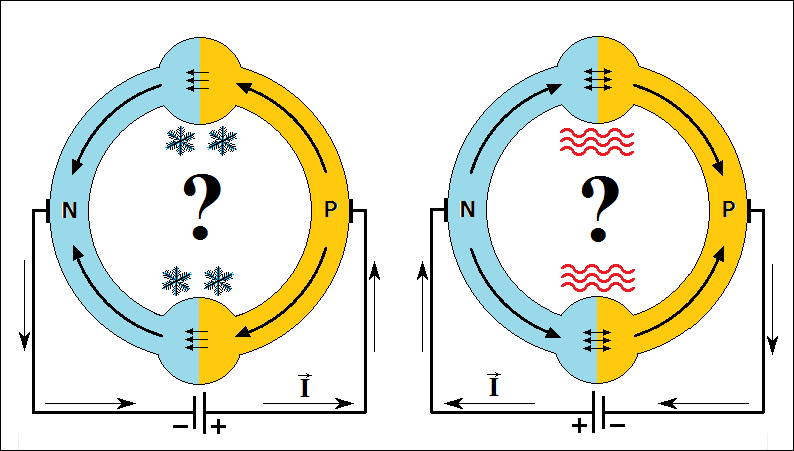-
Seebeck
effect
Two semiconductor segments P and N are welded at the ends.
The formed circuit has opposite electrostatic polarities, so mutual rejection.
By heating one of the welded junctions, electromagnetic current is produced
and the other junction cools. This is the Seebeck effect.
Vector Interpretation.
The hot and cold feelings are the electromagnetic oscillations of the
atoms, or emitted by them.
So the electromagnetic oscillations disappear at a junction and appear
in the other.
The heated junction develops oscillations, it dilates, the atoms absorbs
and emits oscillations, the amplitude of its own oscillations varies,
the electric bonds of the atoms breaks, produce electric arc, and their
polarities orient omnidirectional. Thus, the polarities of the other junction
close an electromagnetic circuit and cool down. The established current
has potential and intensity of short-circuit.
The Seebeck effect converts heat into electricity and thermal polarization.
The device became an electromagnet.
The effect of Peltier
Peltier introduce electricity to the same device and produces thermal
polarization.
The effects are determined by the electric current interaction, specific
to the two junctions.
When the electricity directly connected at a junction, the current finds
there a superconducting structure, the polarities of the atoms being already
oriented without resistance.
Atoms easily absorb
electromagnetic oscillations, without emitting, their energy being at
minimum.
The effects show the realization of the superconducting, cold, structures
only by closing the electrons in Faraday's cage.





